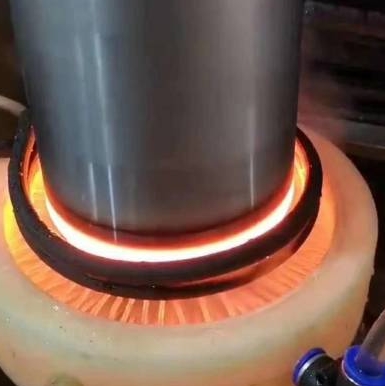- 12
- Apr
Introduction to the basic principle of high frequency induction heating equipment
Introduction to the basic principle of high frequency induction heating equipment
High-frequency and induction heating technology currently has the highest heating efficiency for metal materials, fast speed, low consumption and environmental protection. It has been widely used in thermal processing, heat treatment, thermal assembly, welding and smelting of metal materials in various industries. It can not only heat the workpiece as a whole, but also heat the parts of the workpiece in a targeted manner; it can realize deep diathermy of the workpiece, or it can only heat the surface and surface layer; it can not only directly heat metal materials, but also heat non-metallic materials. The material is heated indirectly. etc. Therefore, induction heating technology will be more and more widely used in various industries.
A surface heat treatment process that uses an induced current to locally heat the workpiece. This heat treatment process is often used for surface quenching, but also for partial annealing or tempering, and sometimes for overall quenching and tempering.
Put the workpiece into the inductor (coil), when an alternating current of a certain frequency is passed into the inductor, an alternating magnetic field is generated around it. The electromagnetic induction of the alternating magnetic field causes a closed induced current—eddy current—in the workpiece. The distribution of induced current on the cross-section of the workpiece is very uneven, and the current density on the surface of the workpiece is very high and gradually decreases inward. This phenomenon is called the skin effect. The electrical energy of the high-density current on the surface of the workpiece is converted into heat energy, which increases the temperature of the surface, that is, realizes surface heating. The higher the current frequency, the greater the current density difference between the surface and the interior of the workpiece, and the thinner the heating layer. Surface quenching can be realized by cooling rapidly after the heating layer temperature exceeds the critical point temperature of the steel.

